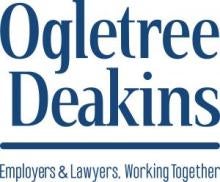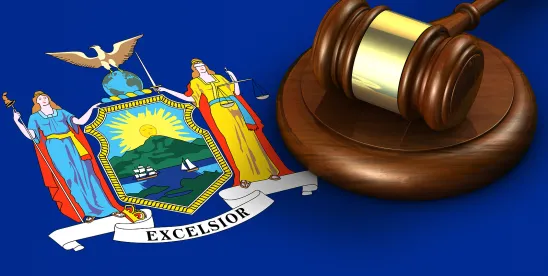Are the days numbered for the U.S. Equal Employment Opportunity Commission’s (EEOC) ability to permit plaintiffs to eschew the administrative process by issuing Notice of Right to Sue letters “on request” prior to 180 days? The short answer: they may certainly be.
On July 30, 2025, in one of the first decisions concerning deference to EEOC regulations since the Supreme Court of the United States struck down Chevron deference in Loper Bright Enterprises v. Raimondo, the U.S. District Court for the Eastern District of New York in Prichard v. Long Island University invalidated an EEOC regulation allowing it to issue “right to sue” notices on request before 180 days had passed.
Noting that the plaintiff employee had explicitly relied on cases that reviewed the EEOC’s regulation under Chevron, the court remanded the federal portion of the plaintiff’s claims to the EEOC and dismissed her state law claims without prejudice. On a broader level, this decision may signal to the agency that post-Loper Bright federal courts will not defer to EEOC regulations found to be inconsistent with the text of Title VII of the Civil Rights Act of 1964, the EEOC’s enabling statute.
Quick Hits
- While the recent Supreme Court decision in Loper Bright overturning Chevron deference has been applied in some employment law agency contexts, very few decisions have since involved EEOC regulations.
- A recent Eastern District of New York case (Prichard v. Long Island University) affords one of the first looks at how Loper Bright may be utilized for an employer’s strategic decisions to challenge EEOC regulations after the disassembling of Chevron deference.
Just a little over a year ago, the Supreme Court issued its landmark decision in Loper Bright Enterprises v. Raimondo, overturning the decades-old Chevron deference (which afforded great weight to agencies’ reasonable interpretations of ambiguous statutory language). For more information on this decision and its impact so far, take a look at our articles here and here. Chevron held that where an agency made a reasonable interpretation of ambiguous statutory language, courts were bound to defer to the agency. The Loper Bright ruling decidedly overturned that deference and squarely held that courts must exercise their independent judgment in deciding whether an agency acted within its statutory authority without simply deferring to an agency’s reasonable interpretation.
Since that time, in the employment and labor law context, several decisions have cited Loper Bright and overturned at least two U.S. Department of Labor (DOL) rules. However, decisions concerning EEOC interpretations of statutory language post-Loper Bright are scarce. Then comes Prichard, which makes clear that an EEOC regulation should not be given the deference previously afforded by Chevron without a court running through its own independent analysis of the interpretation.
Prichard v. Long Island University
In Prichard, the plaintiff, Cecilia Prichard, worked as a financial aid counselor for Long Island University. After she had a kidney transplant and had exhausted her leave under the Family and Medical Leave Act (FMLA), Prichard could not return to work, so the university terminated her employment. Prichard promptly filed a Charge of Discrimination with the EEOC, but requested a Notice of Right to Sue after the Charge of Discrimination had been pending with the EEOC for only fifty-seven days. The EEOC, relying on its long-standing practice under 29 C.F.R. § 1601.28(a)(2), “verified” it could not complete its investigation within the statutorily required 180 days and issued her a right to sue.
After Prichard brought her lawsuit, the university filed a motion to remand the case to the EEOC and dismiss her state claims. The university argued that her right to sue was invalid under the Americans with Disabilities Act, as amended, since the right to sue was issued prior to either the dismissal of her charge or 180 days within the administrative process. The court agreed with the university, holding that the EEOC’s interpretation of the statute in its regulation could not be squared with the actual statutory language. Importantly, the court also noted that the cases cited by Prichard in support of the EEOC’s interpretation were pre-Loper Bright and relied on Chevron deference. To that end, the court conclusively stated,
Prichard’s assertion that deference is due the EEOC’s interpretation of the statute effectively urges this court to operate in a parallel universe in which Loper Bright had been decided the other way. No case that Prichard cites (or that the Court has identified) sided with the EEOC on textual grounds without according deference: they either deferred to the agency pre-Loper Bright, or relied primarily on policy considerations. Neither approach now suffices to overcome the plain text of the statute.
(Citations omitted.)
As the court noted, without according deference to the agency’s interpretation, the contrast between the statutory mandate and the EEOC regulation is readily apparent and cannot be reconciled under Loper Bright.
The ADA incorporates the procedural requirements of Title VII of the Civil Rights Act of 1964. Title VII, in turn, makes plain that the EEOC can issue a notice of right to sue on a charge prior to 180 days of administrative processing only by dismissing the charge. There is no mention of providing a notice of right to sue on a charging party’s request prior to 180 days. Despite this absence and limitation on the statutory authority to issue such notices, the EEOC has always interpreted the statute to allow it to bifurcate its issuance of a notice of right to sue on request from a charging party. Under 29 C.F.R. § 1601.28(a)(2)—the regulation at issue—the Commission interpreted Title VII (and thus, those antidiscrimination statutes that employ Title VII procedures) to permit it (upon its discretion) to “issue [a notice of right to sue] … provided that the [appropriate EEOC officer] has determined that it is probable that the Commission will be unable to complete its administrative processing of the charge within 180 days from the filing of the charge and has attached a written certificate to that effect.”
At bottom, the court held that the EEOC had created a method for plaintiffs to bypass the administrative process required by the statute. Indeed, the EEOC’s interpretation arguably undermined an integral purpose of the antidiscrimination employment statutes: for the Commission to first attempt to resolve employment discrimination charges prior to litigation.
Next Steps
While this lower-court decision is merely persuasive for federal district judges, it may affect employers’ practical decisions regarding litigation and indicate how Loper Bright can be applied in challenges to other EEOC regulatory interpretations. While the lawsuit might be refiled, this decision forces the agency to investigate the matter and provides an opportunity for the employer to potentially resolve the matter administratively.
Notably, the court relied upon Loper Bright, where prior courts had largely granted Chevron deference to the agency without exercising their independent judgment. Under Loper Bright, employers now have more options when determining whether to seek to challenge regulations. All the same, it is important to remember that courts can still uphold regulations based on prior decisions where the courts analyzed the regulations using their own independent judgment under the Chevron scheme. In other words, Loper Bright does not simply overrule all past decisions.
Further, the Prichard court found the EEOC’s rule authorizing the issuance of early right-to-sue letters directly contradicted the agency’s statutory authority. This is important because it underlines that an agency can overstep by contradiction, omission, or invention.







 />i
/>i
